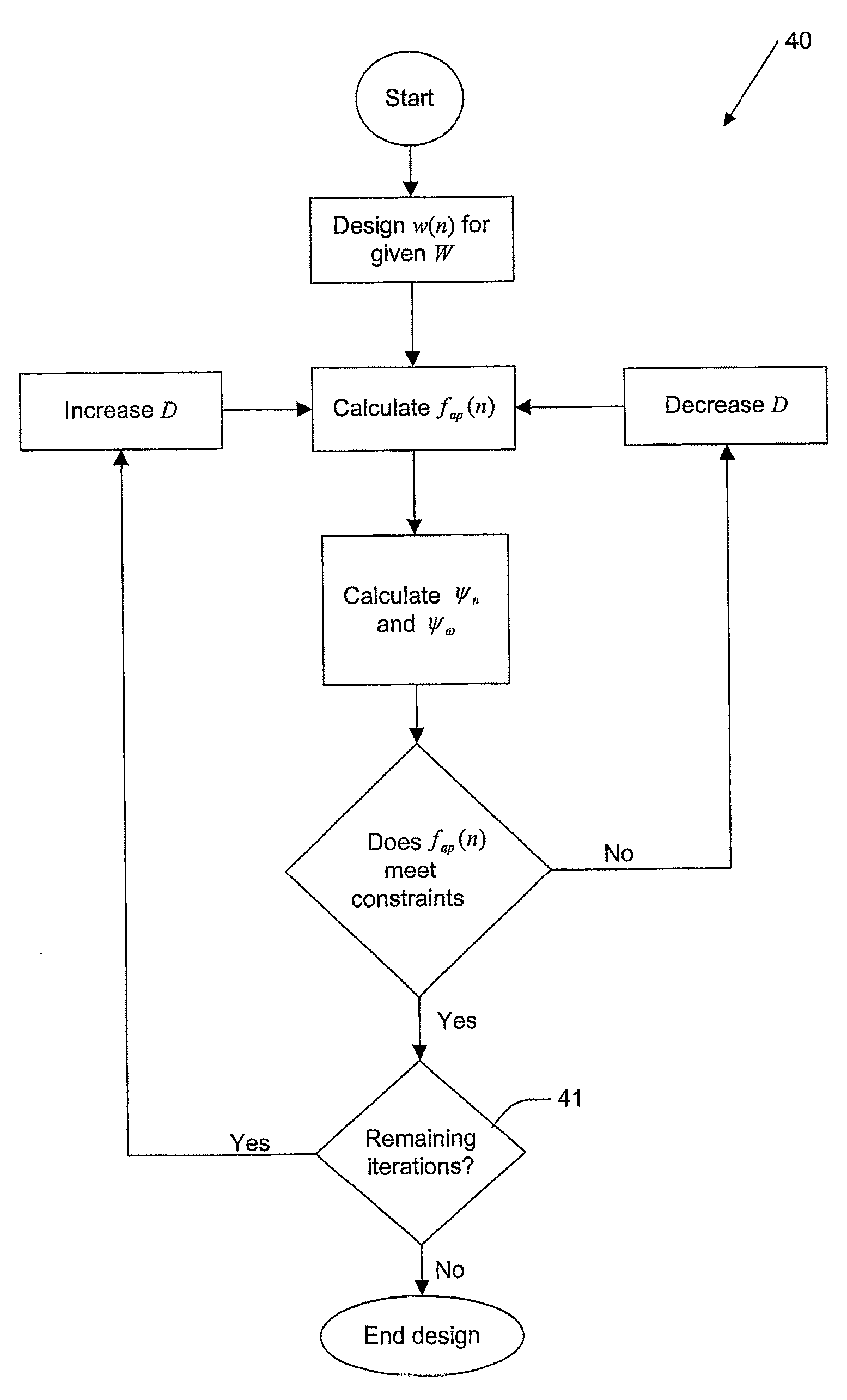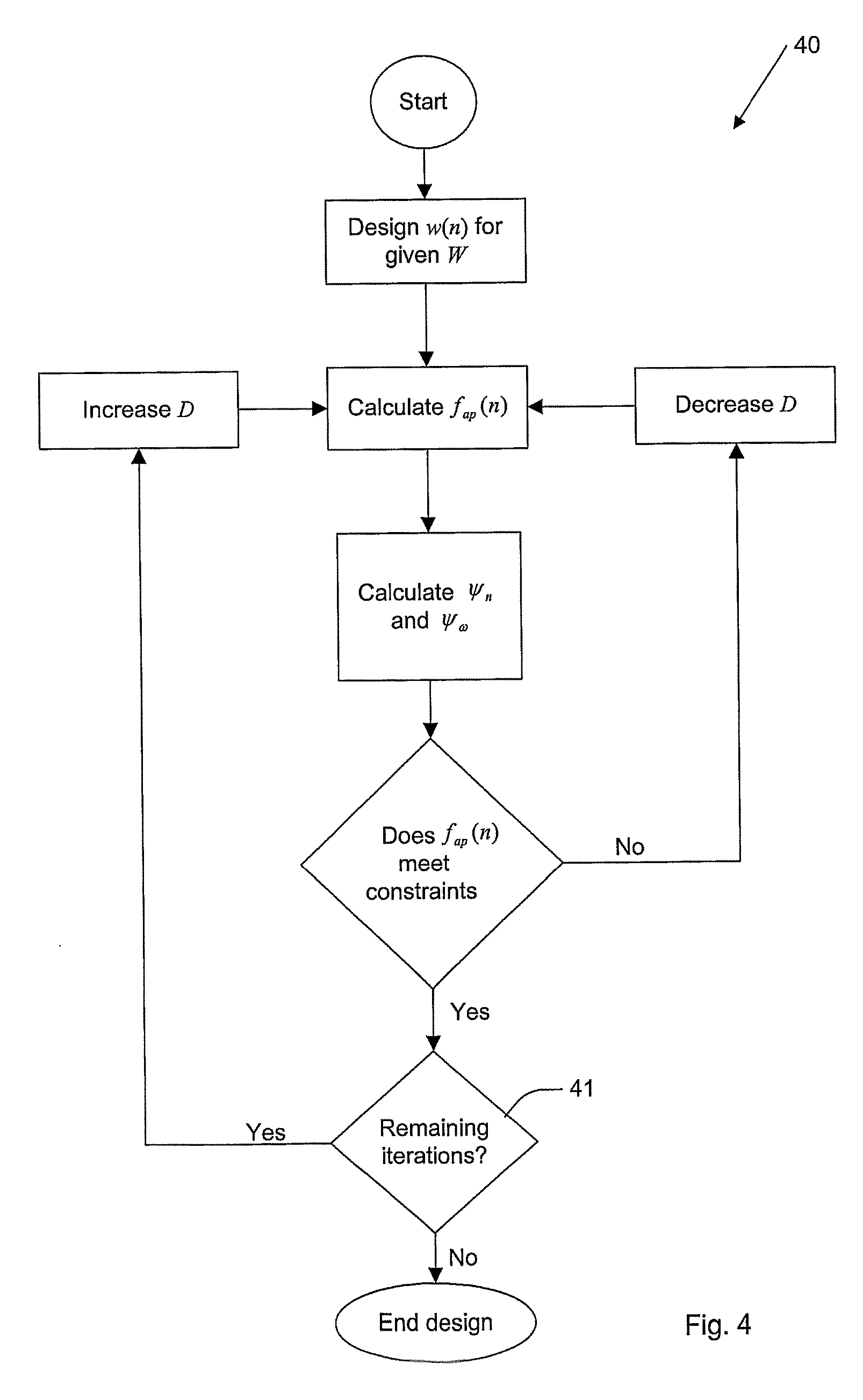Digital Filter Design System And Method
a filter design and digital filter technology, applied in the field of digital signal processing, can solve the problems of additional group delay, general cost of implementation, and the technique described does not include the use and the modification of an allpass filter to correct a limited amount of phase with a controllable amount of overall group delay
- Summary
- Abstract
- Description
- Claims
- Application Information
AI Technical Summary
Benefits of technology
Problems solved by technology
Method used
Image
Examples
Embodiment Construction
Description of the Preferred and Other Embodiments
[0021] The purpose of a digital filter is to modify an input signal in a linear time-invariant fashion. Such a system is shown schematically in FIG. 1 wherein a discrete time (digital) input signal x(n), being convolved (or filtered) 1 by a filter described by h(n), to produce an output signal y(n).
[0022] Digital filtering can be represented in the time domain by equation (1). This relationship can also be shown as multiplication, if each signal is converted under the z-transform to form in Equation (2). y(n)=∑k=0nx(k) h (n-k),n≥0(1)Y(z)=X(z)H(z)(2)
[0023] Where the z-transform and Inverse z-transform are defined as (3) and (4). X(z)=∑n=-∞∞x(n) z-n(3)x(n)=12 π j∮CX(z) zn-1ⅆz(4)
[0024] As shown in FIG. 1, if a signal x(n) 10, passes through a filter c(n) 11 to produce an output p(n), it is possible to post equalise h(n) 12 the resulting response in order to perform some sort of modification to compensate f...
PUM
 Login to View More
Login to View More Abstract
Description
Claims
Application Information
 Login to View More
Login to View More - R&D
- Intellectual Property
- Life Sciences
- Materials
- Tech Scout
- Unparalleled Data Quality
- Higher Quality Content
- 60% Fewer Hallucinations
Browse by: Latest US Patents, China's latest patents, Technical Efficacy Thesaurus, Application Domain, Technology Topic, Popular Technical Reports.
© 2025 PatSnap. All rights reserved.Legal|Privacy policy|Modern Slavery Act Transparency Statement|Sitemap|About US| Contact US: help@patsnap.com



